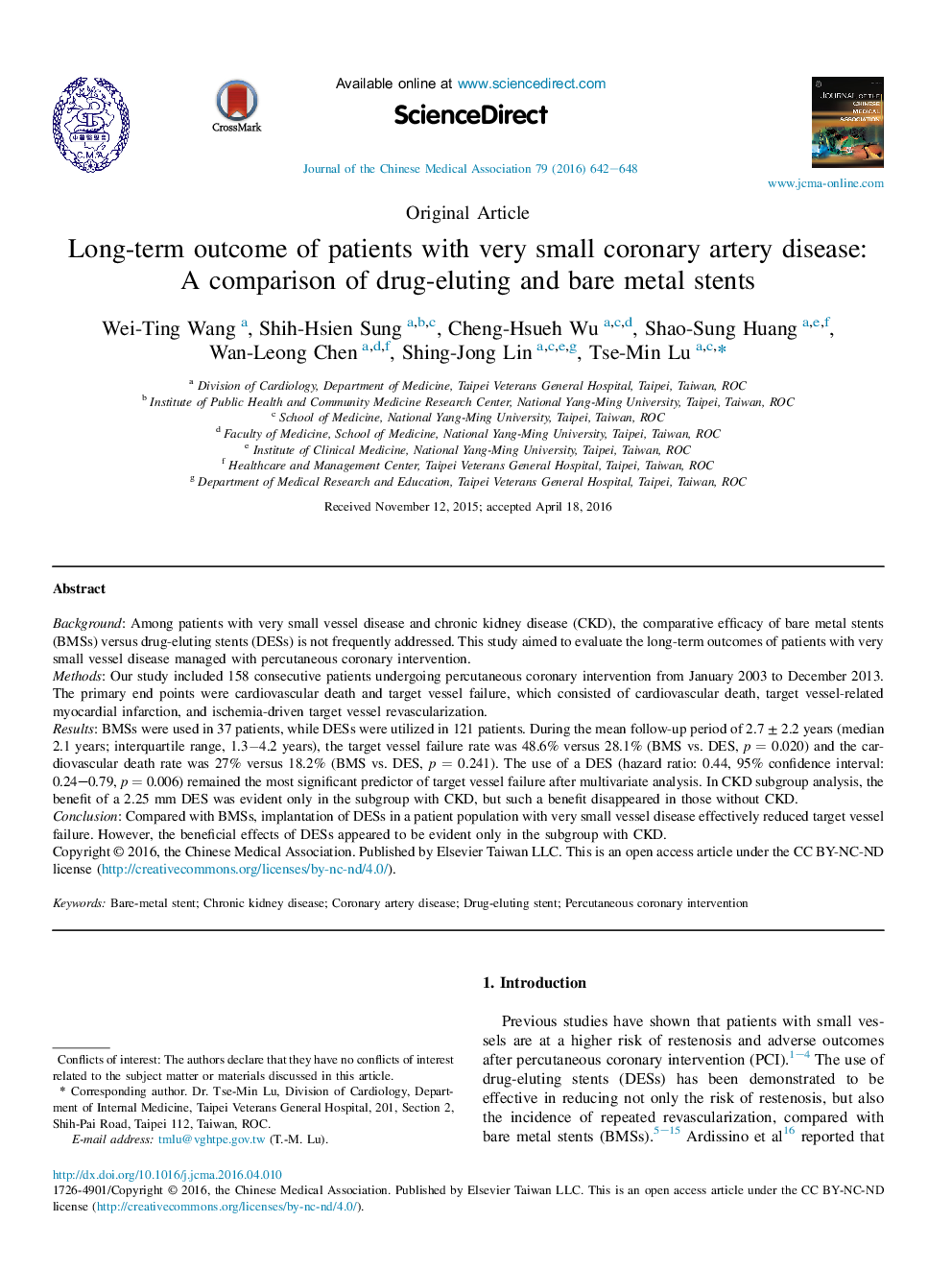| Article ID | Journal | Published Year | Pages | File Type |
|---|---|---|---|---|
| 5679711 | Journal of the Chinese Medical Association | 2016 | 7 Pages |
BackgroundAmong patients with very small vessel disease and chronic kidney disease (CKD), the comparative efficacy of bare metal stents (BMSs) versus drug-eluting stents (DESs) is not frequently addressed. This study aimed to evaluate the long-term outcomes of patients with very small vessel disease managed with percutaneous coronary intervention.MethodsOur study included 158 consecutive patients undergoing percutaneous coronary intervention from January 2003 to December 2013. The primary end points were cardiovascular death and target vessel failure, which consisted of cardiovascular death, target vessel-related myocardial infarction, and ischemia-driven target vessel revascularization.ResultsBMSs were used in 37 patients, while DESs were utilized in 121 patients. During the mean follow-up period of 2.7 ± 2.2 years (median 2.1 years; interquartile range, 1.3â4.2 years), the target vessel failure rate was 48.6% versus 28.1% (BMS vs. DES, p = 0.020) and the cardiovascular death rate was 27% versus 18.2% (BMS vs. DES, p = 0.241). The use of a DES (hazard ratio: 0.44, 95% confidence interval: 0.24-0.79, p = 0.006) remained the most significant predictor of target vessel failure after multivariate analysis. In CKD subgroup analysis, the benefit of a 2.25 mm DES was evident only in the subgroup with CKD, but such a benefit disappeared in those without CKD.ConclusionCompared with BMSs, implantation of DESs in a patient population with very small vessel disease effectively reduced target vessel failure. However, the beneficial effects of DESs appeared to be evident only in the subgroup with CKD.
